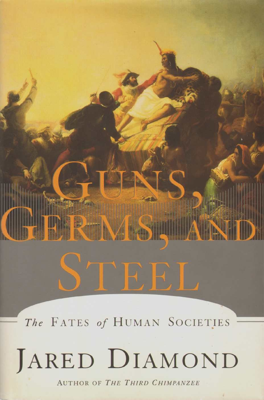HEMISPHERES COLLIDING: The Histories of Eurasia and the Americas Compared
Hemispheric Differences in Domestication and Food Production
The chapter describes the profound impacts stemming from the differences in domesticable plants and animals between the Old World (Eurasia) and the New World (Americas). Eurasia benefited from numerous domesticable large mammal species which provided various advantages such as sources of protein, transport, and labor in agriculture. In contrast, the Americas had only the llama/alpaca, significantly limited in use compared to Eurasian counterparts. This lack of domesticable fauna contributed to less effective food production systems, influencing societal development and complexity.
Technological and Military Disparities
Technological and military capabilities were far more advanced in Eurasia by A.D. 1492. Eurasia had developed significant technologies like metal tools, use of the wheel, more advanced sea navigation technology, and superior military equipment, including steel weaponry and horses. Such technological advancements provided Eurasian societies with a distinct advantage in various facets of civilization, including agriculture efficiency and military conquest.
Political and Writing Systems
Eurasian societies were characterized by more centralized and organized states with literate bureaucracies that facilitated administration and coordination. This contrasted sharply with the Americas, where only a few areas had developed complex administrative systems, and the use of writing was limited. The lack of widespread, sophisticated political organization and writing systems in the Americas further widened the disparity with Eurasian societies.
Historical Trajectory and Events
Events such as the Norse attempts at colonization underscore the significant role geographical and climatic conditions played in the effectiveness of societal expansion and technological application. The Norse, despite their efforts, were hindered by harsh climates and inadequate technology to support lasting colonies in Greenland and North America. In contrast, the later Spanish conquests succeeded due to advanced maritime technology, effective utilization of domestic animals like horses, and the ability to exploit political divisions among Indigenous peoples.
Disease Dynamics
Diseases played a critical role in the conquests. Eurasians carried germs to which they had developed immunities but were lethal to the indigenous populations of the Americas. This resulted in massive population declines among Native Americans, drastically weakening their societies and enhancing the effectiveness of European conquests.
Cultural and Genetic Consequences
The chapter concludes with a reflection on the aftermath of these historical interactions. The massive demographic changes involved not only population reduction among Native Americans due to diseases and warfare but also significant cultural and genetic mixing. This blending has resulted in the contemporary demographic and cultural landscape of the Americas, predominantly influenced by European cultural norms and languages.
Overall, this chapter details the multitude of factors – biological, technological, political, and geographical – that influenced the differing societal developments and interactions between Eurasia and the Americas. These factors cumulatively led to the dramatic transformations observed post-1492, reshaping the demographic and cultural compositions of these continents.
